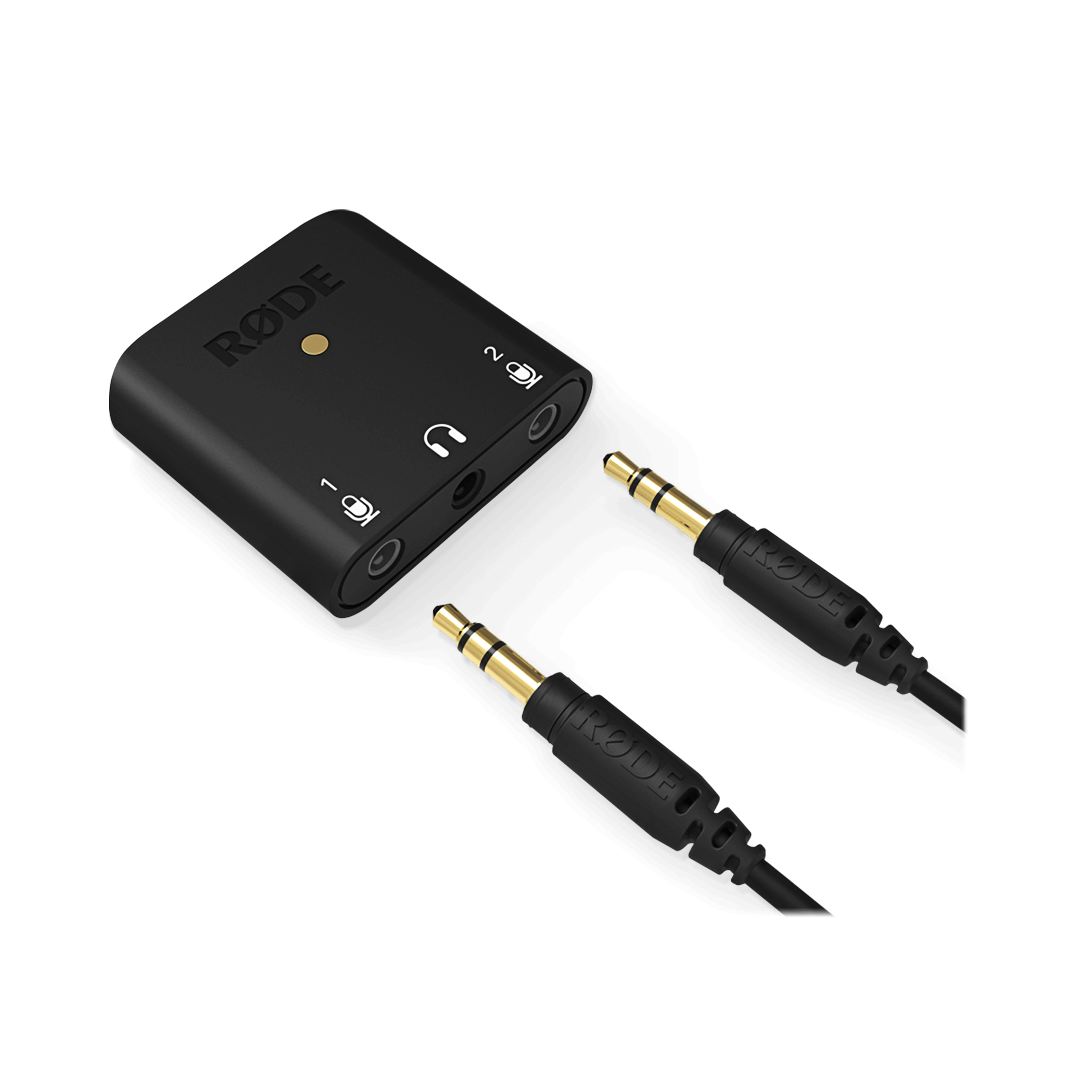AI-Micro
Interface audio compacte
Le AI-Micro est une interface double canal ultra-compacte pour enregistrer de l'audio de haute qualité sur un appareil mobile ou un ordinateur. Dotée de deux entrées auto-détectantes pour connecter pratiquement n'importe quel microphone avec une sortie 3,5 mm, d'une surveillance au casque, d'une sortie universelle USB pour une utilisation avec des smartphones, tablettes et ordinateurs, et d'une compatibilité avec les applications RØDE pour un son suralimenté, le AI-Micro vous permet d'enregistrer sans limites.
Caractéristiques principales :
- Interface audio double canal ultra-compacte pour ordinateurs et appareils mobiles
- Compatible avec pratiquement tout microphone avec une sortie 3,5 mm, y compris les RØDE VideoMic, les lavaliers, les systèmes sans fil et les microphones stéréo qui ne nécessitent pas d'alimentation par prise
- Entrées auto-détectantes pour connecter des microphones TRS ou TRRS
- Sortie casque de haute qualité pour une surveillance audio et une lecture sans latence
- Se connecte sans effort aux ordinateurs, smartphones et tablettes via la sortie universelle USB (câbles USB-A, USB-C et Lightning fournis)
- Compatible avec la suite d'applications RØDE pour des fonctionnalités et une configuration étendues, et un enregistrement de qualité broadcast sur n'importe quel appareil
- Interface audio ultra-compacte à deux canaux pour ordinateurs et appareils mobiles
- Compatible avec pratiquement tous les microphones avec une sortie 3,5 mm, y compris RØDE VideoMics, lavaliers, systèmes sans fil et microphones stéréo qui ne nécessitent pas d'alimentation par prise
- Entrées auto-détectantes pour connecter des microphones TRS ou TRRS
- Sortie casque de haute qualité pour un monitoring audio sans latence et une lecture
- Se connecte facilement aux ordinateurs, smartphones et tablettes via la sortie universelle USB (câbles USB-A, USB-C et Lightning fournis)
- Compatible avec la suite d'applications RØDE pour des fonctionnalités et caractéristiques étendues, une configuration en déplacement et un enregistrement de qualité broadcast sur n'importe quel appareil
Audio Incroyable, Partout
Le AI-Micro vous permet de capturer un son de haute qualité sur votre mobile ou ordinateur en toute simplicité. Il dispose de deux entrées 3,5 mm pour connecter une large gamme de microphones, y compris les RØDE VideoMics, les lavaliers, les systèmes sans fil comme le Wireless GO. Ce sont des entrées auto-détectantes qui identifient si un microphone TRS ou TRRS est connecté et s'adaptent automatiquement – pas besoin d'adaptateurs. L'entrée 1 peut également être configurée comme une entrée stéréo TRS unique pour une utilisation avec des microphones stéréo qui ne nécessitent pas d'alimentation par prise.
Des préamplis de microphone de haute qualité et un enregistrement haute résolution (24 bits/48 kHz) garantissent une capture audio cristalline sur n'importe quel appareil, avec une sortie casque pour un monitoring audio sans écho et une lecture. Que vous soyez en train d'interviewer, de podcaster, de présenter ou de diffuser en direct, enregistrez un son incroyable partout avec le AI-Micro.
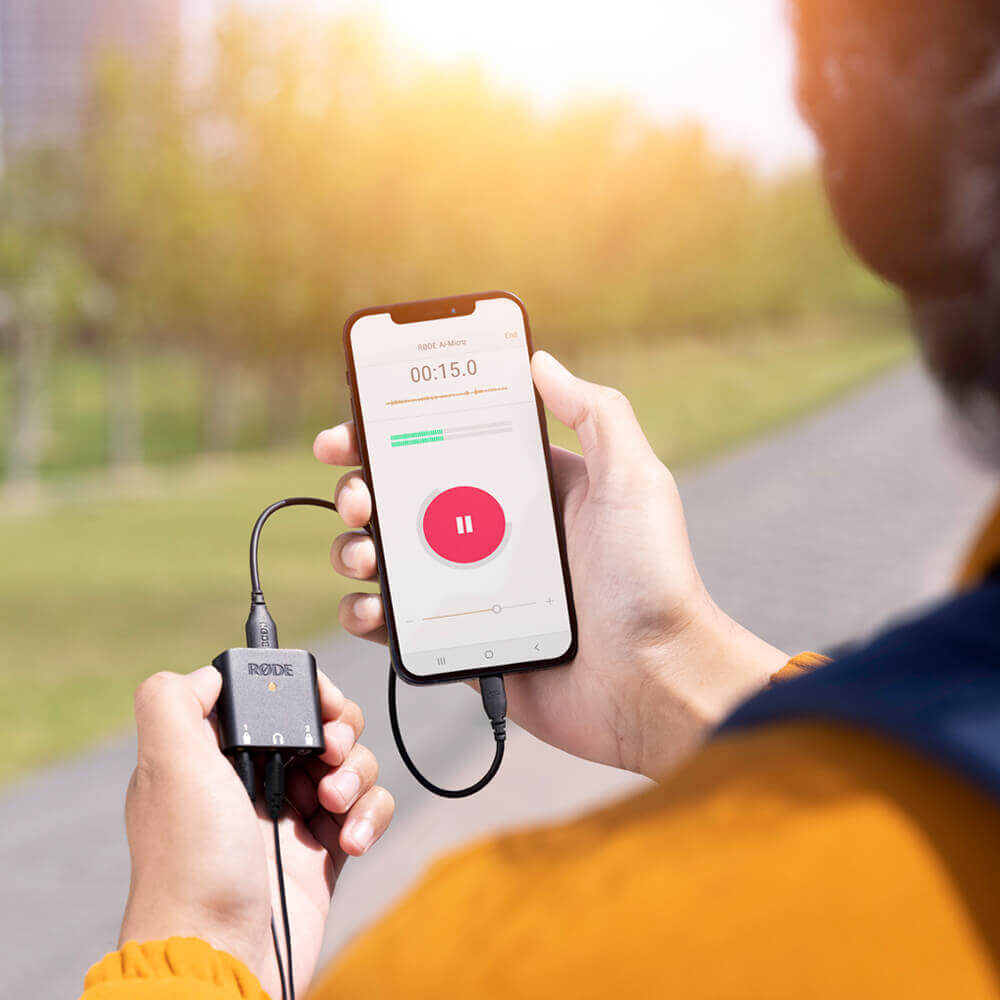
Compatibilité universelle avec tous vos appareils
Le AI-Micro peut se connecter sans effort à tous vos appareils grâce à sa sortie universelle USB. Il est fourni avec des câbles USB-A, USB-C et Lightning, vous permettant d'enregistrer instantanément, et est compatible plug-and-play avec les appareils Mac, Windows, iOS et Android. L'enregistrement portable n'a jamais été aussi simple.
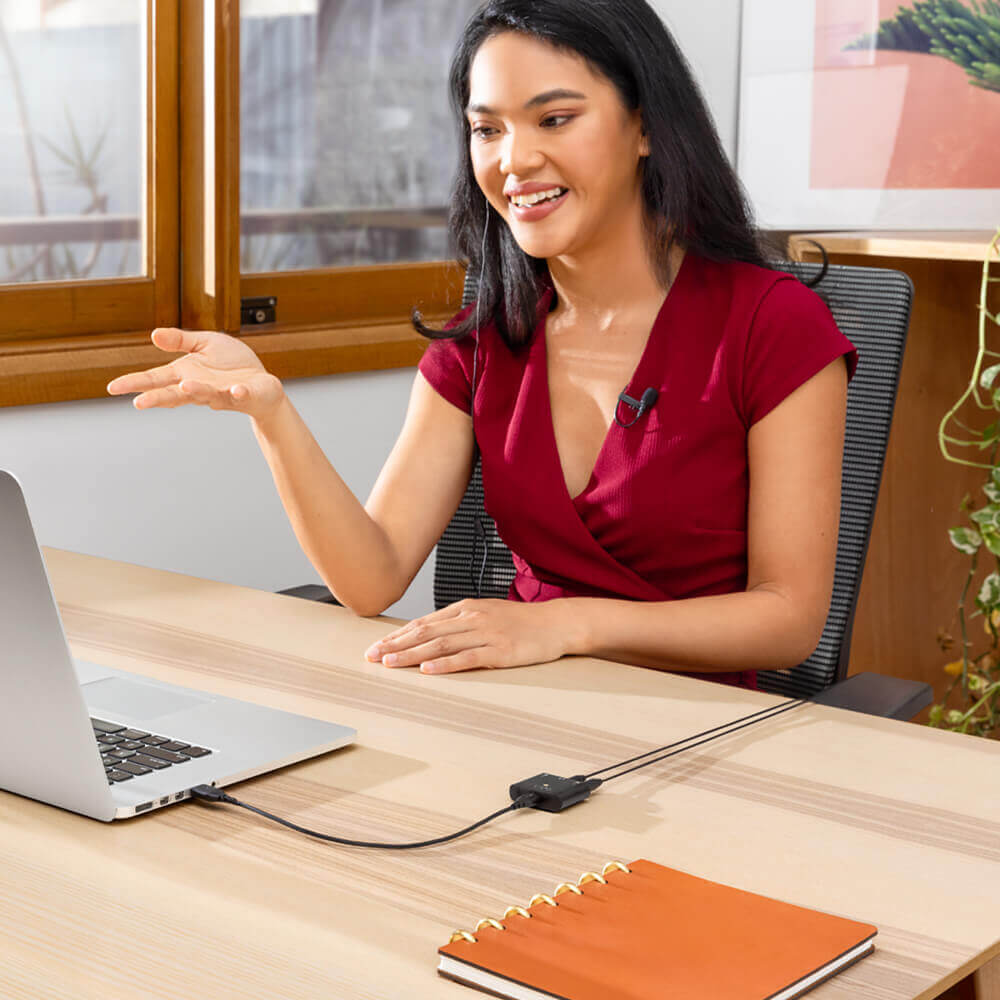
Portabilité de poche
Pesant moins de 20 grammes, le AI-Micro est extrêmement compact et léger. Ajoutez simplement deux microphones cravate et vous obtenez un ensemble d'enregistrement de qualité studio qui tient dans votre poche. Parfait pour les interviews sur le terrain, le podcasting en déplacement, et pour passer des appels vidéo ou diffuser en direct depuis chez vous.
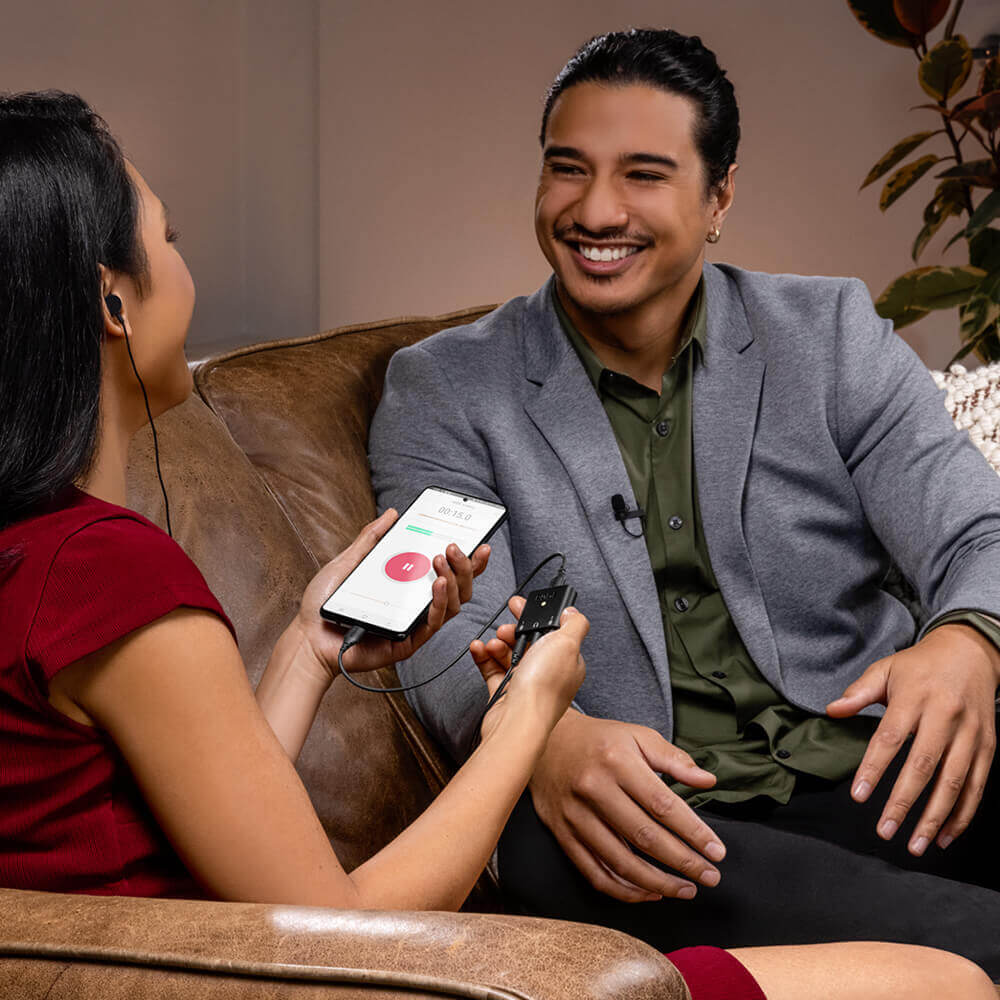
Guide de l'utilisateur AI-Micro
Le Guide de l'utilisateur AI-Micro explique tout ce que vous devez savoir sur l'utilisation de votre AI-Micro. Ce guide complet couvre tout, depuis les premiers pas jusqu'à la mise à jour du firmware de l'appareil et comment accéder à des fonctionnalités et caractéristiques étendues avec la suite d'applications RØDE, y compris RØDE Connect, RØDE Reporter et RØDE Central.
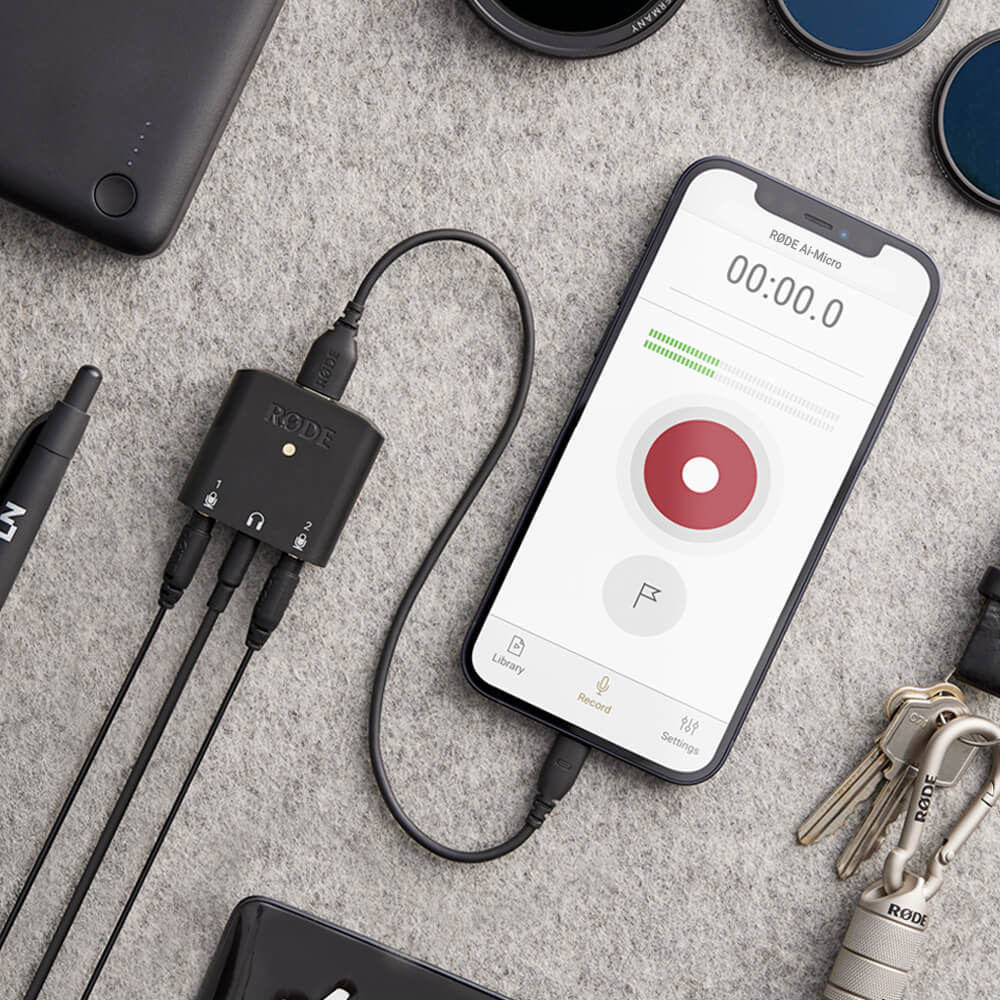
Boostez Votre Microphone
Le AI-Micro est compatible avec l'ensemble de la suite d'applications RØDE, vous donnant accès à des fonctionnalités étendues
et une fonctionnalité, configuration en déplacement, enregistrement de qualité broadcast sur n'importe quel appareil.

Connexion RØDE
Enregistrez des podcasts ou des livestreams de qualité professionnelle sur un ordinateur avec votre microphone 3,5 mm. Enregistrez avec jusqu'à quatre microphones sur un ordinateur. Accédez au traitement audio de qualité studio en un clic, et bien plus encore.

RØDE Reporter
Enregistrez un son de qualité diffusion n'importe où avec votre smartphone ou tablette, avec un contrôle complet sur les paramètres du AI-Micro, un affichage d'onde en temps réel et un indicateur de niveau, un partage natif et plus encore.

Central RØDE
Configurez votre AI-Micro avec votre appareil mobile ou ordinateur, y compris le réglage du gain d'entrée du microphone et du niveau de surveillance du casque, l'activation d'un filtre passe-haut, et plus encore.
Spécifications
Foire aux questions
The AI-Micro can be used with iOS and Android smartphones and tablets, and Mac and Windows computers, as long as the device has a USB-A, USB-C or Lightning connector. OS requirements: macOS Big Sur and higher, Windows 10 (Build 19041) and higher, iOS 14 and higher, Android 9.0 and higher.
You can plug virtually any microphone that has a 3.5mm output into the AI-Micro. This includes RØDE VideoMics, lavaliers, wireless systems like the Wireless GO, and stereo microphones that do not require plug-in power. The AI-Micro's microphone inputs are TRS/TRRS auto-sensing, meaning they automatically detect whether a TRS or TRRS microphone is connected and adapt to accommodate either connection type.
While similar in design and concept to the SC6-L, the AI-Micro has a few key updates that make it far more versatile, including a universal USB output for use with Android smartphones and tablets (and iOS devices with a Lightning port like the SC6-L), as well as computers. It has also enhanced inputs for use with a wider range of microphones and is compatible with the RØDE app suite for accessing advanced features, on-the-go configuration, and broadcast-quality recording on any device.
Yes. To connect the AI-Micro to an iOS device with a Lightning port, you need a Lightning Accessory Cable – either the included SC21 cable, or the RØDE SC15 or SC19.
We recommend using the included cables to connect the AI-Micro to your device. If you require a longer cable, there is a selection of different cable types available from the RØDE accessory range. To connect the AI-Micro to an iOS device with a Lightning port, you need either the included SC21 cable, or the RØDE SC15 or SC19.
Check out the AI-Micro User Guide for detailed information on its functions and features.
The input gain for each of the AI-Micro's microphone channels can be adjusted in RØDE Connect, RØDE Central and RØDE Reporter. You can also adjust the input gain using the level control in third-party audio or video apps if they have this feature. If you are using an app without a level control and would like to adjust the input gain, use RØDE Central, as any changes made to the levels in RØDE Connect or RØDE Reporter will not be retained when using another app.
The AI-Micro allows you to configure how the audio from the input channels is routed to the output. There are three different channel modes, ‘Merged’, ‘Split’ and ‘Stereo’, which are suited to different microphone setups.
In ‘Merged’ mode, the input signal is routed to both the left and right channels of the output, which is ideal if you are just using one microphone. In ‘Split’ mode, input 1 is routed to the left channel of the output and input 2 is routed to the right channel, which is ideal if you are using two microphones. ‘Stereo’ mode is ideal when you are using a stereo microphone; the left and right channels of input 1 are routed to the respective channels of the output to ensure you retain the microphone’s stereo image (input 2 is disabled).
You may have direct monitoring deactivated. This can be turned on/off via a computer or mobile device using RØDE Central (note: direct monitoring is activated by default on the AI-Micro).
It is possible to connect a dynamic XLR microphone (or other microphone that does not require phantom power) to the AI-Micro with an appropriate XLR to 3.5mm adaptor. However, we strongly recommend using the RØDE AI-1 interface for connecting XLR microphones to a computer.
To connect a stereo microphone such as the Stereo VideoMic Pro to the AI-Micro, you must plug it into input 1 and use either RODE Central or RODE Reporter apps to set the channel mode to ‘Stereo’. This configures input 1 to be a standard stereo TRS input (and disables input 2).
Note: This function only works for stereo microphones that do not require plug-in power.



